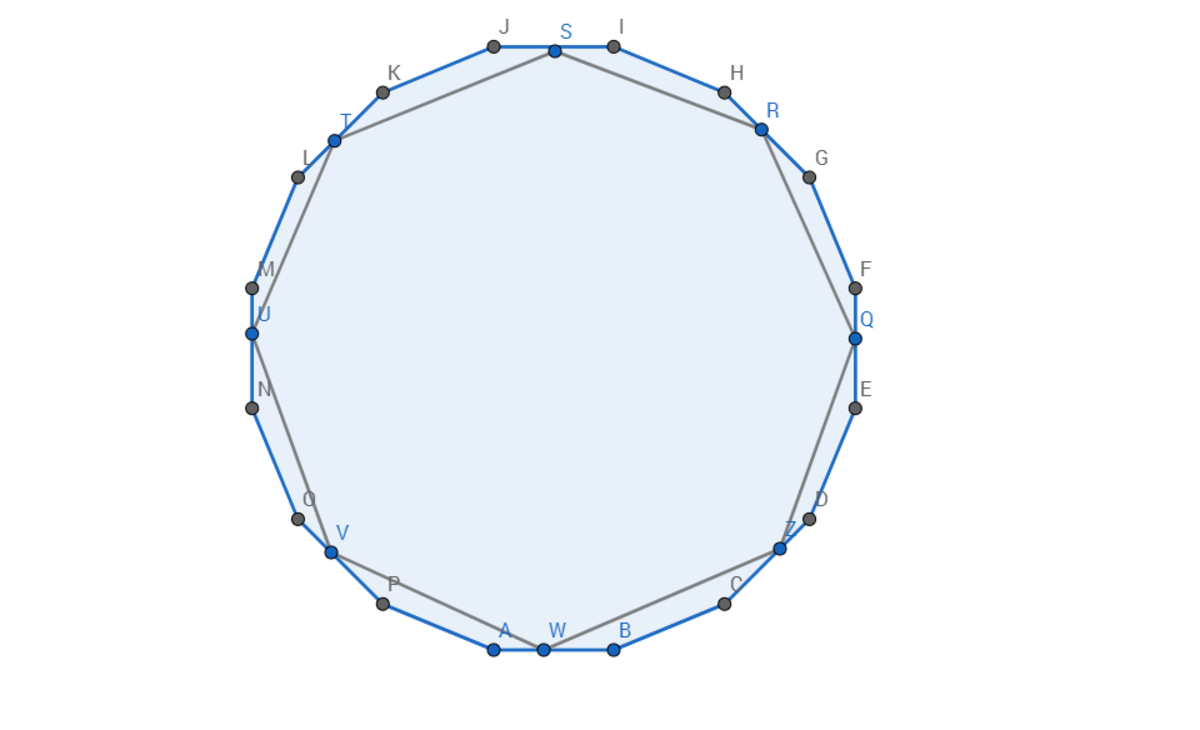Polygons Inscribed In Polygons

An analogy of the problem below is the octagon inscribed in the 16-gon above.
Let n be a positive integer and n ≥ 3 .
Let A 1 , A 2 , . . . , A 2 n be the vertices of a regular 2 n -gon.
Connect the midpoints m ( j ) = 2 A 2 j − 1 + A 2 j , where ( 1 ≤ j ≤ 2 n − 1 ) , to form a 2 n − 1 -gon.
Let A 2 n be the area of the 2 n -gon and A 2 n − 1 be the area of the 2 n − 1 -gon.
Find A 2 n A 2 n − 1 , then using n = 1 0 find A 1 0 2 4 A 5 1 2 to 9 decimal places.
The answer is 0.999971763.
This section requires Javascript.
You are seeing this because something didn't load right. We suggest you, (a) try
refreshing the page, (b) enabling javascript if it is disabled on your browser and,
finally, (c)
loading the
non-javascript version of this page
. We're sorry about the hassle.
For 2 n -gon:
Let B C = x be a side of the 2 n − g o n , A C = A B = r , A D = h , and ∠ B A D = 2 n π .
2 x = r sin ( 2 n π ) ⟹ r = 2 sin ( 2 n π ) x ⟹ h = 2 x cot ( 2 n π ) ⟹ A 2 n = 2 n − 2 c o t ( 2 n π ) x 2 .
For 2 n − 1 -gon:
Let B C = L and A D = h ∗ .
A C = A B = h = 2 x cot ( 2 n π ) and ∠ B A C = 2 n − 1 π + 2 n π + 2 n π = 2 n − 2 π ⟹ ∠ B A D = 2 n − 1 π ⟹ . L = x cot ( 2 n π ) sin ( 2 n − 1 π ) ⟹ h ∗ = 2 x cot ( 2 n π ) cos ( 2 n − 1 π ) ⟹ A 2 n − 1 = 2 1 ∗ ( 2 n − 3 cot 2 ( 2 n π ) sin ( 2 n − 2 π ) x 2 ) ⟹
A 2 n A 2 n − 1 = 4 1 ∗ ( cot ( 2 n π ) sin ( 2 n − 2 π ) ) .
Rewriting this as A 2 n A 2 n − 1 = cos 2 ( 2 n π ) cos ( 2 n − 1 π ) ⟹ lim n → ∞ A 2 n A 2 n − 1 = 1 .
For n = 1 0 ⟹ A 1 0 2 4 A 5 1 2 = 0 . 9 9 9 9 7 1 7 6 3